Mexico is one of the world’s most popular vacation destinations with over 20 million foreign visitors a year. Famous for its tequila, the Aztecs and the Mayas, Salma Hayek, Day of the Dead, drug wars, Lucha libre, Corona beer and the beach resorts on the Pacific and Caribbean side, Mexico can offer something for every sort of traveler.
From Pre-Columbian ruins and historic colonial towns to white powdery beaches and huge canyons, this country offers visitors a wide range of things to do. For ideas on the best places to visit check out our list of the top tourist attractions in Mexico.
25. Monte Alban
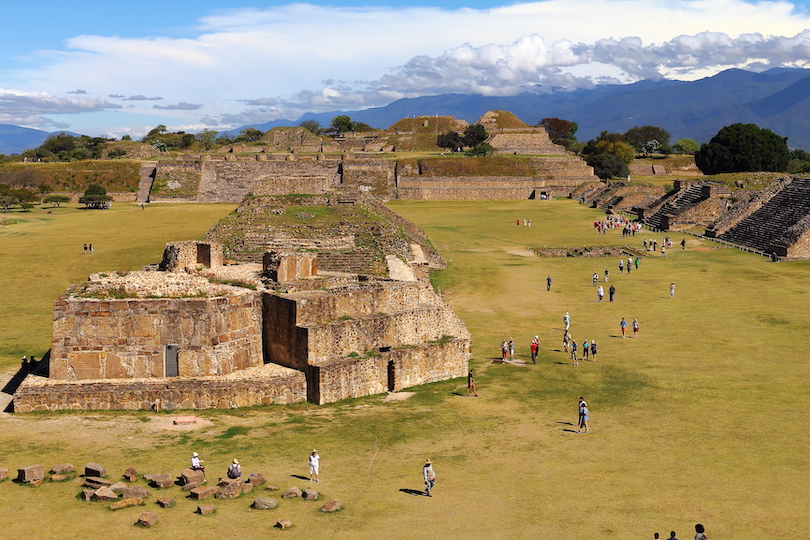
Monte Alban, or White Mountain, was once the ancient capital of the Zapotec people. Overlooking the Valley of Oaxaca, Monte Alban is one of the top archeological sites in Mexico. In addition to spectacular views over the valley, visitors will be able to see the ruined buildings around a broad, flat hilltop terrace, the Gran Plaza, that runs north to south.
Two large pyramid mounds terminate the great plaza at the ends, and the sides of the space are lined with stepped platforms and terraces.
24. San Miguel de Allende
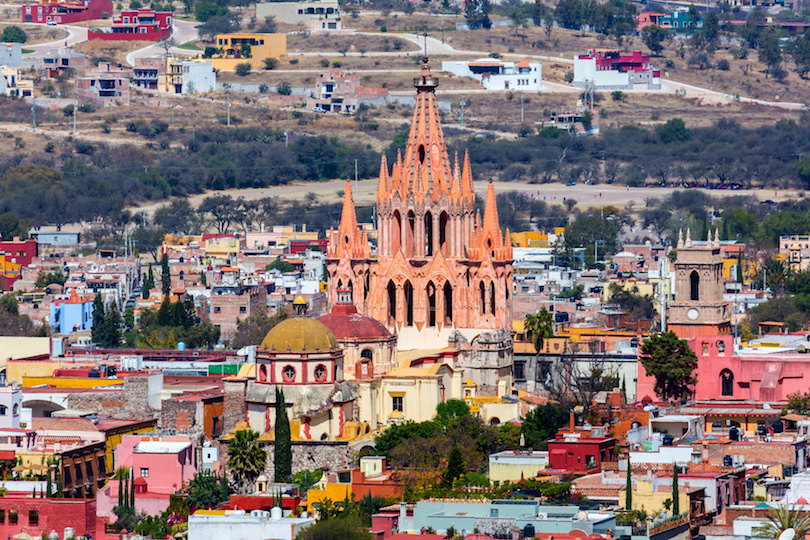
In the Bajio mountains of Central Mexico, there is a small colonial destination known as San Miguel de Allende. The city is bursting with history: It was founded by a San Franciscan Monk, played a big role in the war for Mexican independence from Spain and was a vital spot on the Mexican silver trail.
Today, it is best known for its colonial architecture and enchanting cobblestone streets. Historic buildings like the pink Teatro Angela Peralta and the Santuario de Atotonilco, an enormous church complex, are among the top attractions in the city.
23. Monarch Butterfly Biosphere Reserve

The annual Monarch butterfly migration is one of nature’s great spectacles and a top attraction for visitors to Mexico’s central highlands. Each year, millions of Monarch Butterflies make the journey from eastern Canada to the forests of western central Mexico, a journey that spans up to 3,000 miles.
The Monarch butterflies spend their winter hibernation clustered in small areas of the Monarch Butterfly Biosphere Reserve in Michoacan, before they travel to the north again.
22. Great Pyramid of Cholula
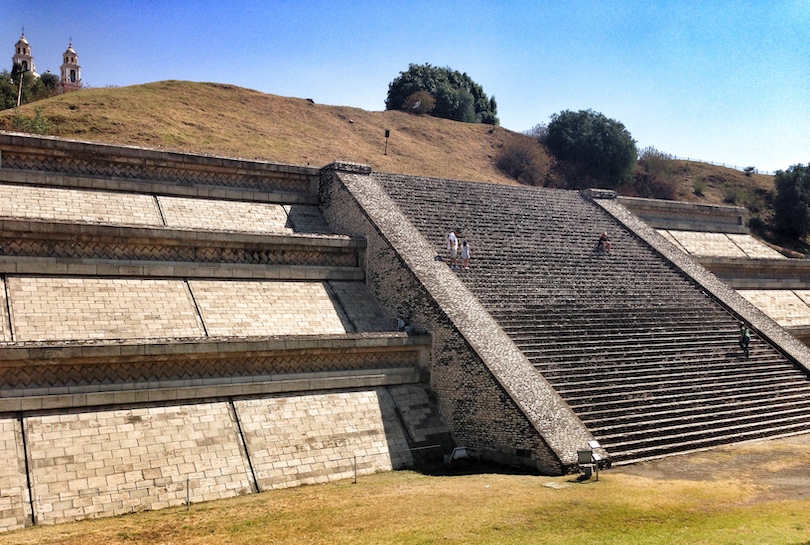
Outside of Puebla is the Great Pyramid of Cholula, an archeological site that is home to the largest pyramid in the world. Also known as Tlachihualtepetl, the Great Pyramid of Cholula was built in four stages, the first of which began 2,300 years ago. Much of the pyramid is now overgrown though and appears to be a natural hill topped by a Catholic church.
This is the “Iglesia de Nuestra Señora de los Remedios” which was built by the Spanish in 1594. Visitors are able to tour more than four miles of underground tunnels that showcase the sheer size and scope of this incredible landmark.
21. El Malecon
The boardwalk in Puerto Vallarta, also known as El Malecon, is a marvelous seaside promenade that border the blue waters of the Pacific. Most of El Malecon is exclusively for pedestrians, making it a safe place to take photos and admire the view.
Statues line the boardwalk, there are often elaborate sand displays on the beach, and there are also countless local establishments that cater to visitors. It is possible to stroll along El Malecon and stop for handmade souvenirs, some fresh seafood or a few tropical drinks at a local bar.
20. Uxmal
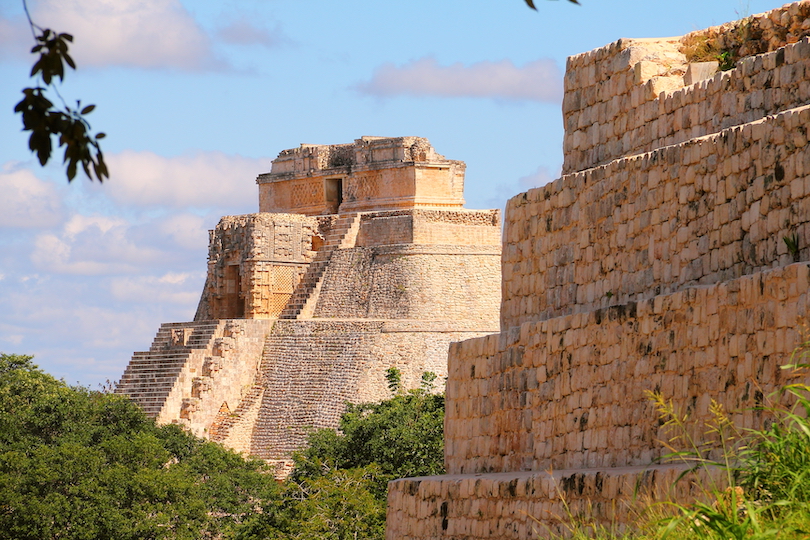
The ancient Mayan city of Uxmal is one of the most historically and culturally significant attractions in Mexico. Roughly 55 km (35 miles) south of Merida in Yucatan, the city was constructed primarily in the ninth century. Uxmal was once the capital of the region, and it is a prime example of Puuc architecture.
Various stone levels, along with elaborate stonework, gives the pyramid structures a grand appearance. Not to be missed is the Magician’s Pyramid, the tallest of the pyramids at Uxmal.
19. Zipolite
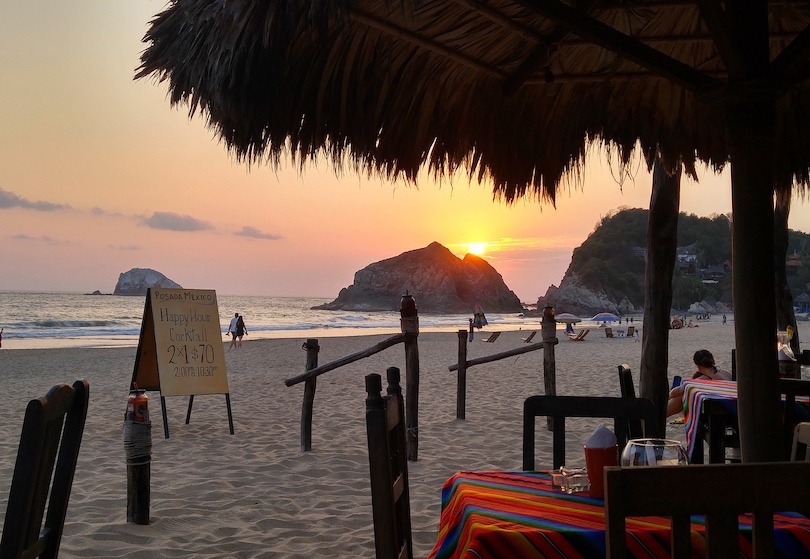
Along the Pacific Coast in the Oaxaca region is Zipolite, a one-mile beach that retains a progressive, hippie vibe. In decades past, Zipolite was a nude beach, although that is far less common today.
Zipolite attracts travelers in search of a counter-culture vibe, and it still retains an authentic Mexican atmosphere despite the tourists from all around the world. While the beach itself is the main attraction, Zipolite is also well known for Av Roca Blanca, a street just off the beach that offers bars, shops and cafes.
18. Museo Nacional de Antropologia
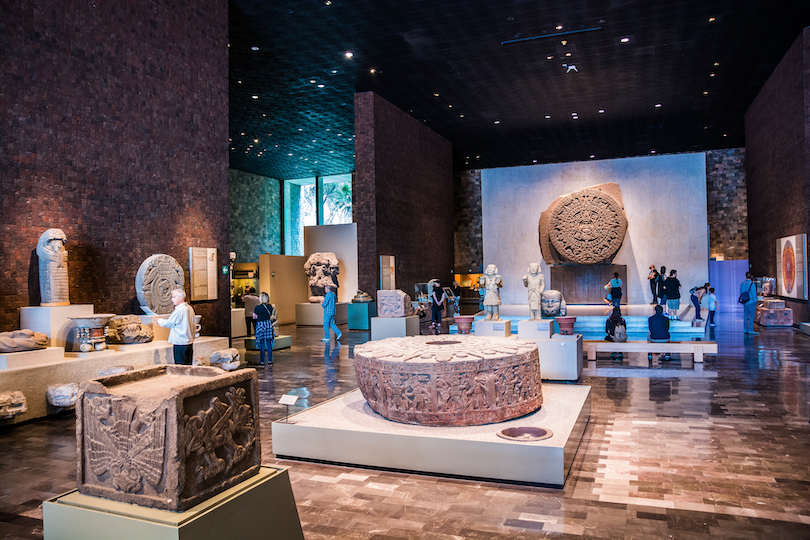
The Museo Nacional de Antropologia, or National Museum of Anthropology, is both the largest and most visited museum in all of Mexico. Located in Mexico City’s Chapultepec Park, the museum boasts an enormous collection of artifacts and exhibits relating to the pre-Columbian heritage of the country. This includes Mayan and Aztec pieces, such as the famed Stone of the Sun, which is the original Aztec calendar stone.
17. El Tajin
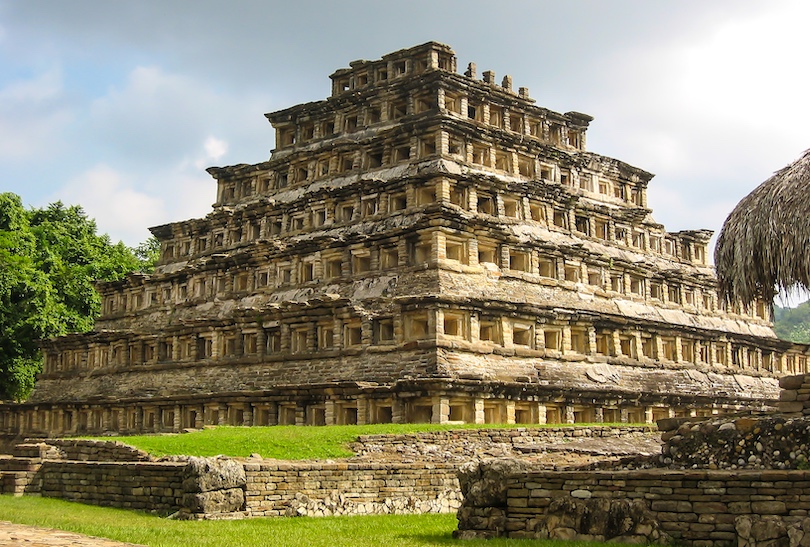
El Tajín was an important gulf coast city, founded by the Classic Veracruz culture. Most of the buildings at the site were constructed between 600 – 900 AD. Surrounded by the green jungle, these ruins are believed to have been the political and administrative center of the entire civilization.
Today, visitors can see more than 150 identified buildings, although just a dozen are restored and open to the public at any given time. Of note is the Pyramid of Niches, the most impressive structure at the site.
16. San Ignacio Lagoon
There are several places to go whale watching in Mexico, but none is so spectacular than San Ignacio Lagoon. Located off the coast of Baja California Sur, the lagoon is the winter home to a number of Eastern Pacific gray whales.
During the winter months, gray whales come to give birth in the shallowest parts of the lagoon. San Ignacio Lagoon is now Latin America’s largest wildlife sanctuary, and there are many guided boat tours that allow visitors to get up close and personal with the gray whales.
15. Bonampak Murals
Bonampak is an ancient archeological site in the state of Chiapas. While there are many Mayan structures at Bonampak worth exploring, the most famous is the Temple of Murals. This temple is where the Bonampak Murals can be found, a collection of ancient art that helps explain the history and culture of the Mayans. Hundreds of figures were painted in three different rooms, each of which tells a part of a narrative in bold turquoise, red and yellow hues.
14. Isla Mujeres
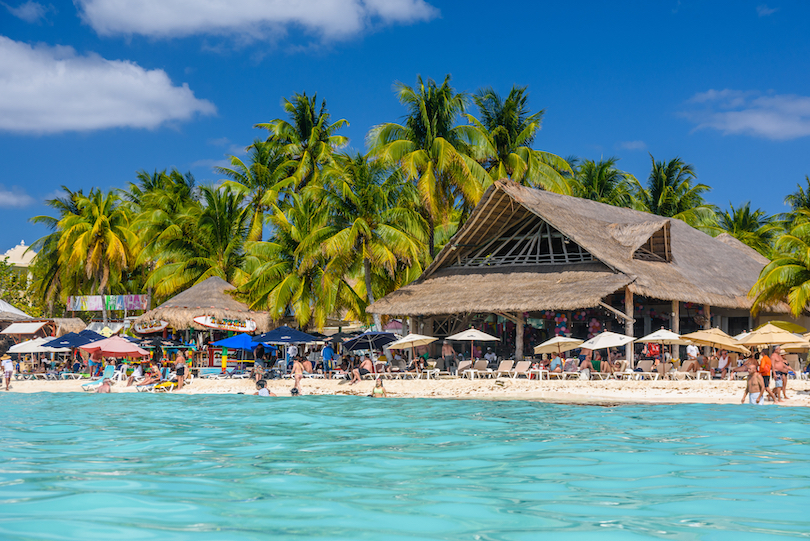
Surrounded by the blue waters of the Caribbean Sea, just eight miles from Cancun, is Isla Mujeres. This island is a hotspot today, but it also has significance for the region’s cultural heritage. Isla Mujeres, which translates to the island of women, was sacred to the Mayan goddess of childbirth.
Today, travelers arrive by ferry from Cancun to relax on the scenic beaches, visit the local turtle farm, scuba dive or snorkel in the clear waters or just relax away from the Cancun beach crowds.
See also: Where to Stay in Cancun
13. Santa Prisca Church in Taxco
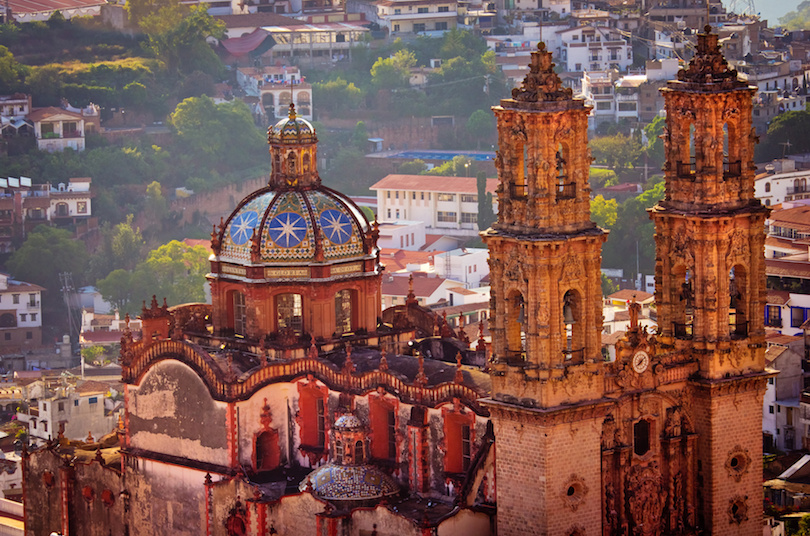
El Templo de Santa Prisca, or the Santa Prisca Church, is a magnificent Baroque structure located in the city of Taxco. Built in the 18th century, the church is a colonial landmark that was commissioned by a prosperous Spanish mine owner.
Made from pink stone, boasting large twin towers and decorated with tiles, this is an ornate monument that no architecture enthusiast would want to miss. Inside, nine enormous altarpieces stretch from the floor to the ceiling, and each is covered in gold.
12. Acapulco Cliff Divers
Acapulco is the original Mexican resort town which came into prominence by the 1950s as a getaway for Hollywood stars and millionaires. No visit to Acapulco is complete without watching the cliff divers perform their impressive jumps into ocean.
They have been doing it since the 1930s, although today the divers are professionals. You can see the dives from a small platform by the cliff for a small entrance fee, or eat at the La Perla restaurant which offers a good view of the divers.
11. Cenote Dos Ojos
Just outside of Tulum is Cenote Dos Ojos, one of the country’s largest underwater cave systems. The name means the cavern of two eyes, referring to the two sinkholes connected by a long passageway.
The water in the caverns is filtered through limestone, making it exceptionally clear. As a result, Cenote Dos Ojos is wildly popular with both snorkelers and more serious scuba divers, some of whom head deep into the underwater cavern.
10. Catedral Metropolitana
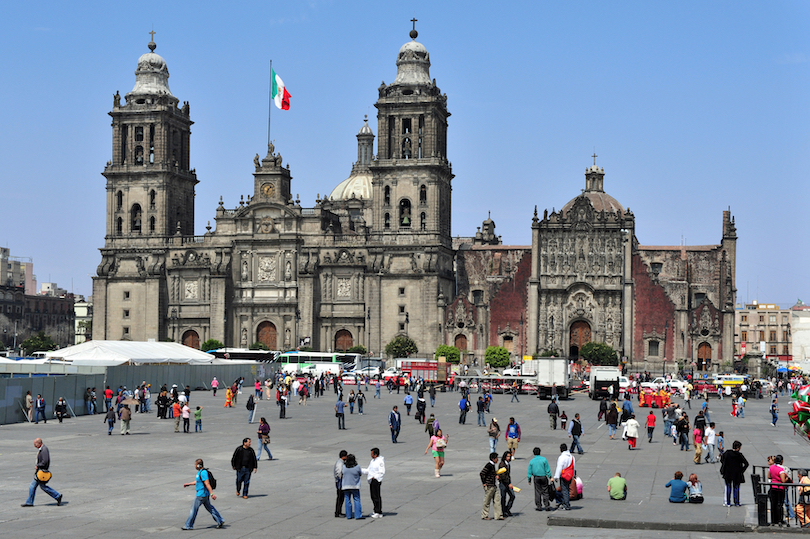
There is no shortage of things to do, see and explore in Mexico City, but a top attraction is unquestionably the Catedral Metropolitana. It is the oldest and the largest cathedral in Latin America, and the 16th century structure dominates the city’s central plaza, known as the Zocalo.
The architecture is a blend of styles, including heavy influences from baroque and Mexican churrigueresque design. In addition to the architecture, the Catedral Metropolitana boasts an extensive art collection as well as catacombs beneath the main structure.
See also: Where to Stay in Mexico City
9. Guanajuato
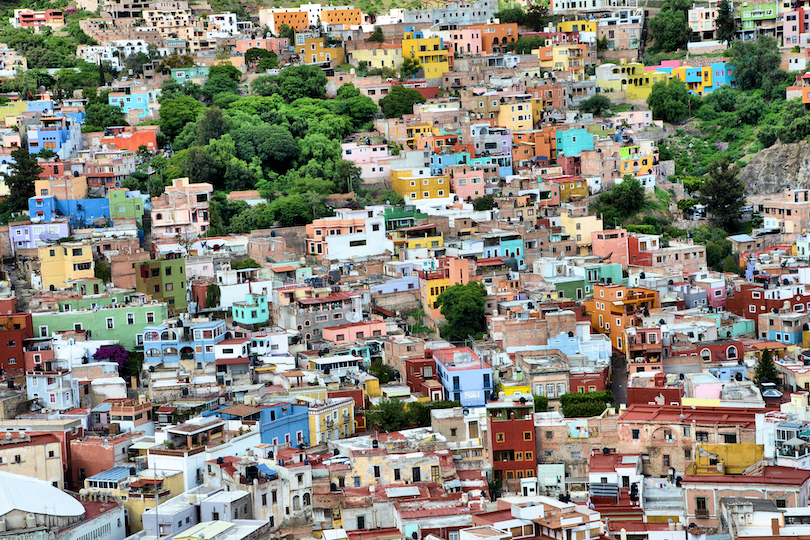
Nestled in the mountains of the Sierra de Guanajuato lies the beautiful colonial city of Guanajuato. The city was founded in 1554 next to one of the richest silver mining areas of Mexico. The 16th-century mining boom led to the construction of beautiful haciendas and fine colonial buildings.
Guanajuato streets and many colorful alleyways spread out in every direction while most of its traffic is served by a network of underground tunnels making it an excellent city for pedestrians.
8. Dias des los Muertos, Oaxaca
The city of Oaxaca is well-known for having one of the best Dia de Los Muertos festivals in Mexico, a holiday celebrated in many parts of Latin America. In Mexico the festival can be traced back thousands of years ago to indigenous cultures such as the Zapotec and Aztec.
In Oaxaca the Day of the Dead Festival starts at the end of October when families prepare the tombs for the return of the spirits. During this time tombs and home altars are decorated with flowers and families leave offerings for the spirits in the cemeteries.
7. Cozumel
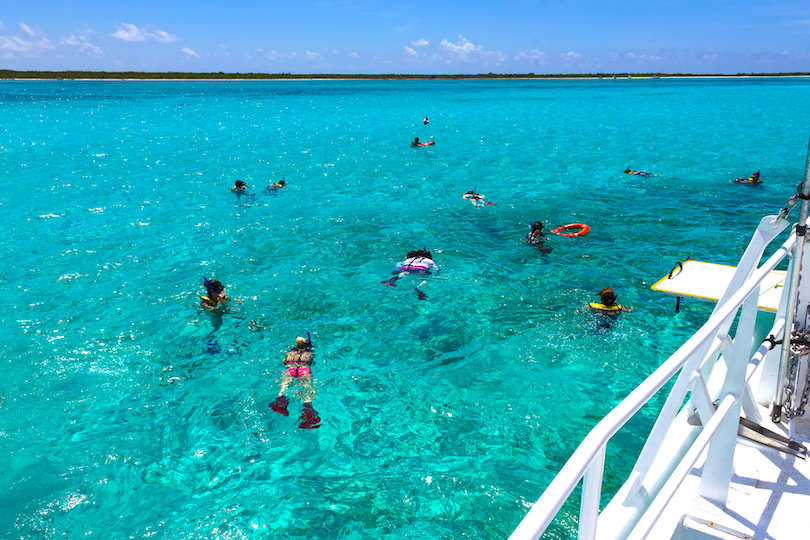
Located just off the Yucatan Peninsula, Cozumel is a popular destinations for scuba diving and snorkeling. The underwater world around Cozumel was discovered by Jacques Cousteau in 1959 who called it one of the best diving areas in the world. Since that time Cozumel has become a National Marine Park to protect the delicate balance of it’s beautiful coral reefs and amazing variety of tropical fish.
6. El Arco
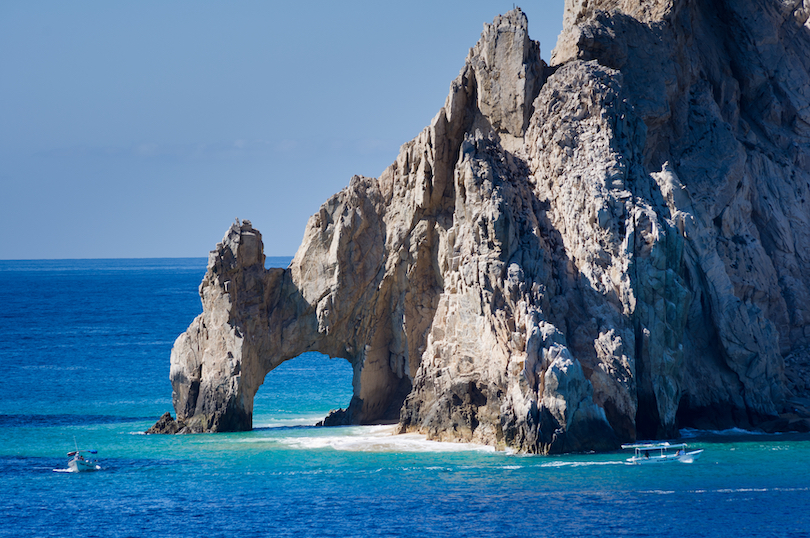
El Arco is an incredible arch found in Cabo San Lucas. This unique rock formation marks the spot where the Pacific Ocean becomes the Gulf of California. The arch has become an icon of Cabo San Lucas, and it can be viewed from several angles.
A stroll along the beach gives the opportunity for amazing pictures of El Arco, not to mention views of the blue waters, the gray whales that frequently frolic in the ocean and additional rock formations along the coastline.
5. Palenque
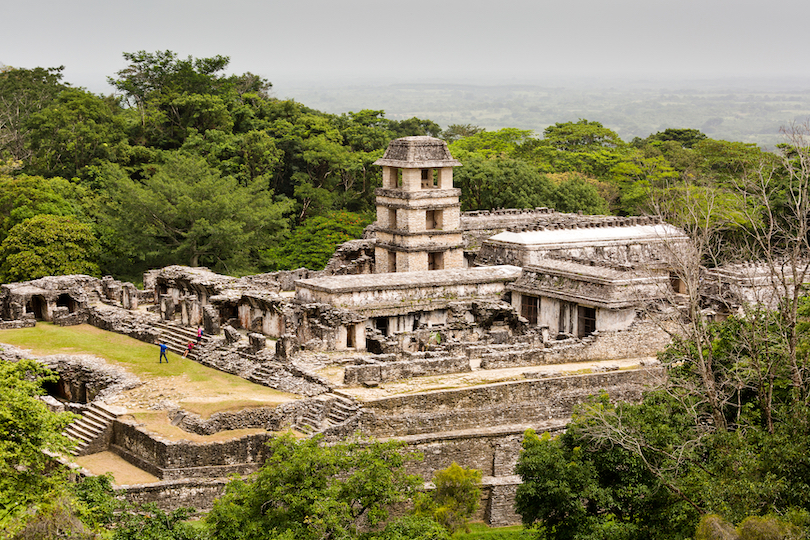
Palenque is an archaeological site that was located on the western edge of the Maya empire in the present-day state of Chiapas, Mexico. Palenque is much smaller than some of its Mayan neighbor cities, but it contains some of the finest architecture and sculptures the Maya ever produced. Most structures in Palenque date from about 600 AD to 800 AD including the Temple of Inscriptions, the only Mesoamerican pyramid built as a funerary monument.
4. Copper Canyon
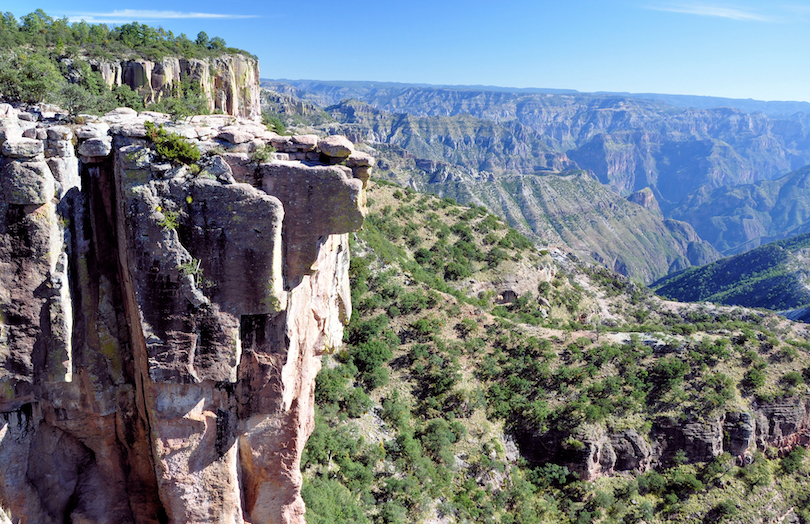
The Copper Canyon is in fact a network of canyons which together are several times larger than the Grand Canyon. The most popular way to explore the Copper Canyon is on the “Chihuahua al Pacifico” Railway. The track passes over 37 bridges and through 86 tunnels, rising as high as 2,400 meter (7,900 feet) above sea level featuring spectacular views of the canyons below.
3. Tulum
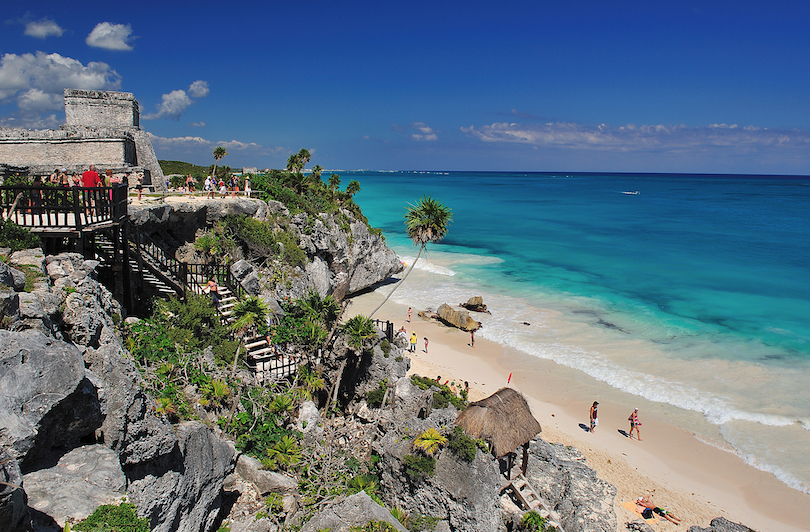
Tulum is situated on the east coast of the Yucatán Peninsula. It once served as the major port of the Mayan city of Coba. Tulum was built around 1200 AD when the Mayan civilization was already in decline and therefore lacks the elegance of some other famous sites.
The tropical beach backdrop however makes this a stunning top attraction which should not be missed. Accommodation in Tulum can range from simple cabanas to 5 star luxury resorts.
2. Chichen Itza
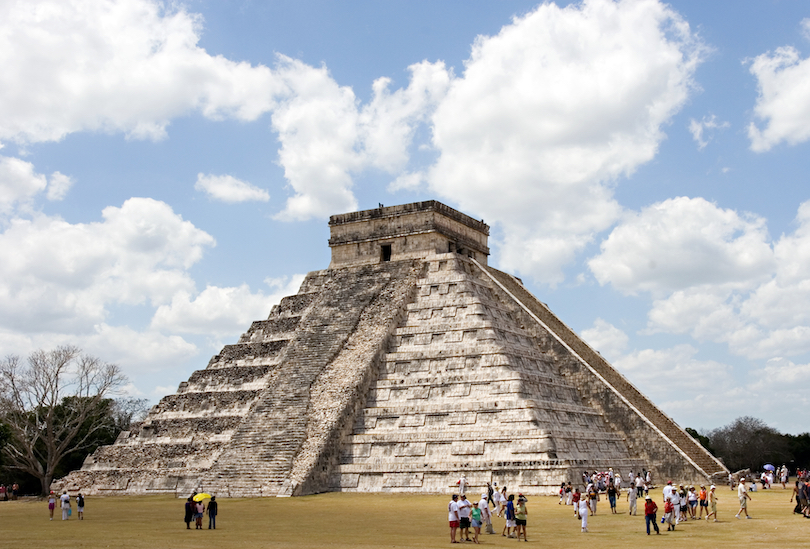
Chichen Itza is the largest of the Maya cities in the Yucatan Peninsula and one of Mexico’s most visited tourist destinations. The most famous landmark of Chichen Itza is the temple-pyramid of El Castillo. The design of the temple has special astronomical significance.
Each face of the pyramid has a stairway with 91 steps, which together with the shared step at the top, add up to 365, the number of days in a year. Other highlights of Chichen Itza include the Great Ballcourt and El Caracol, a circular temple which served as an astronomical observatory.
1. Teotihuacan
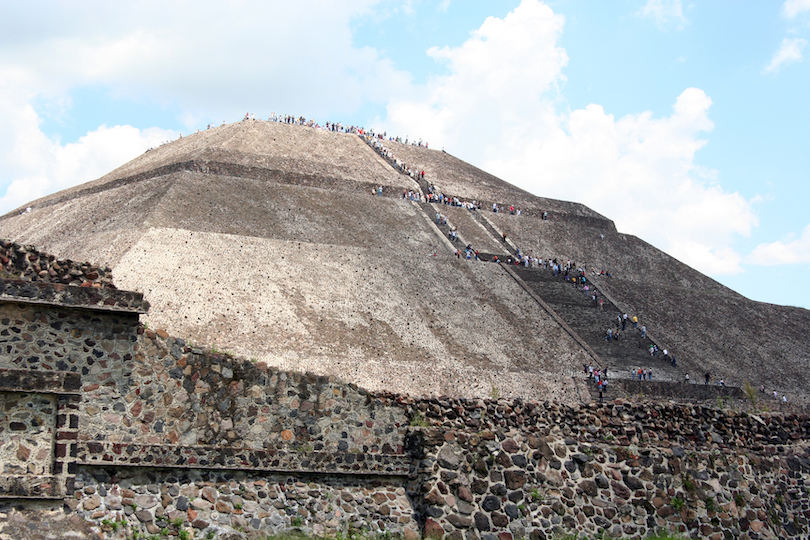
In the 2nd century BC a new civilization arose in the valley of Mexico. This civilization built the flourishing metropolis of Teotihuacán and it’s huge pyramids. The Pyramid of the Sun was built around 100 AD and is the largest pyramid in Teotihuacán and all of Mexico. The construction of the smaller Pyramid of the Moon started a century later and was finished in 450 AD.
Seven centuries after the demise of the Teotihuacán empire the pyramids were honored and utilized by the Aztecs and became a place of pilgrimage. Mesoamerica’s greatest city is just 31 miles (50km) northeast of Mexico City and can be reached by bus or taxi.

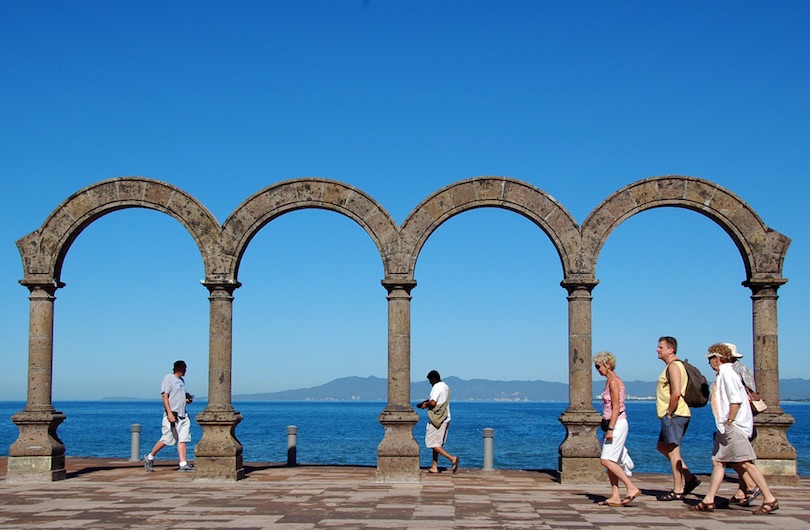
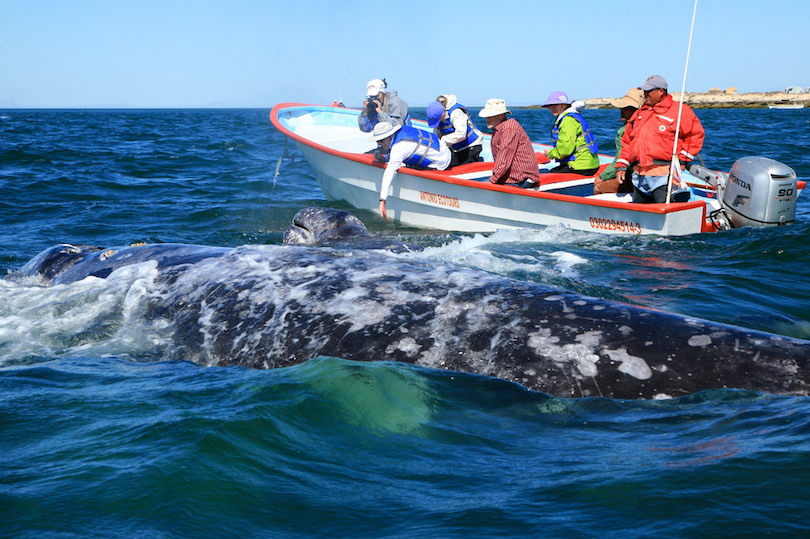
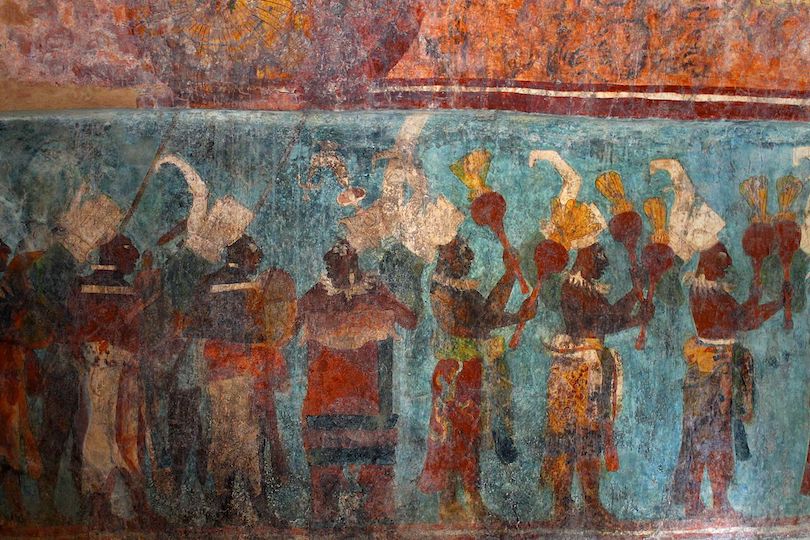
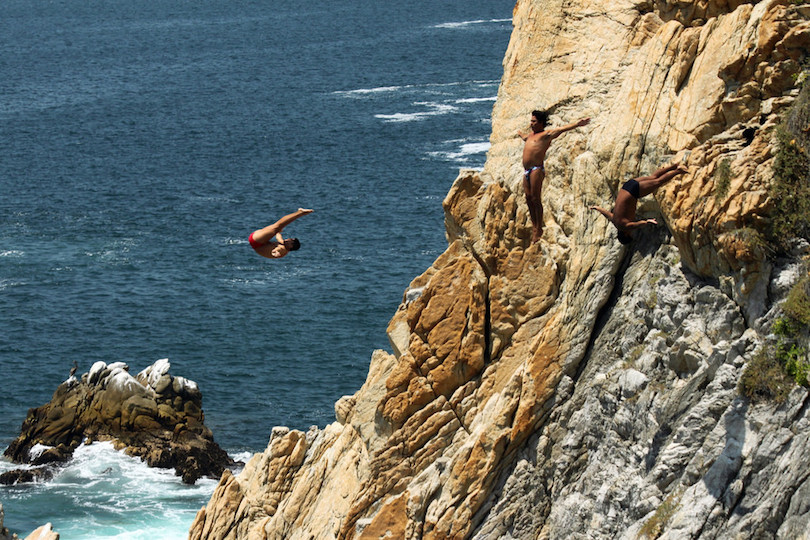
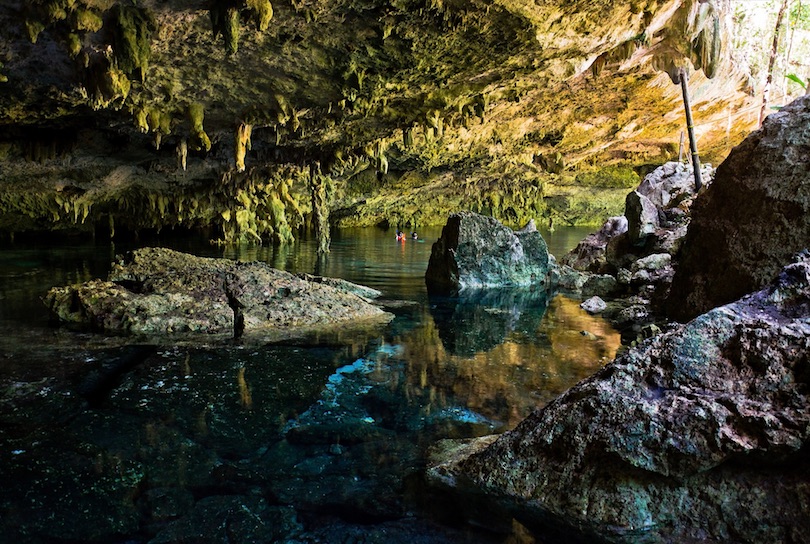
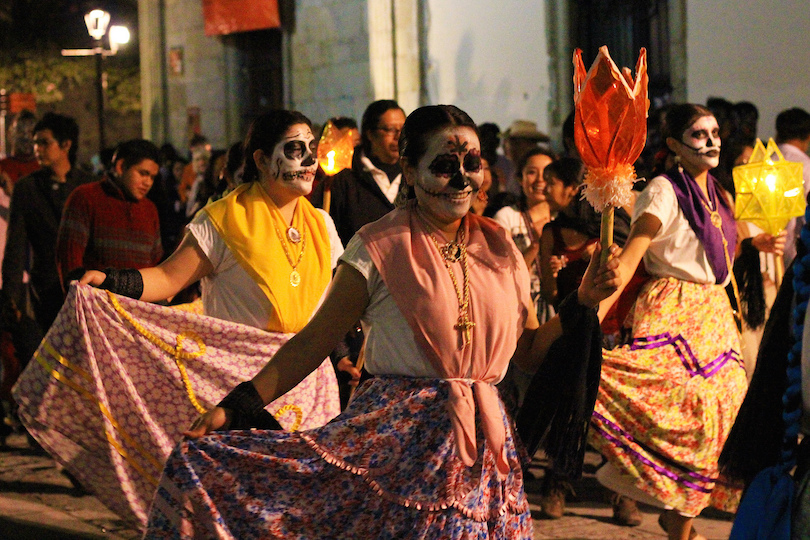
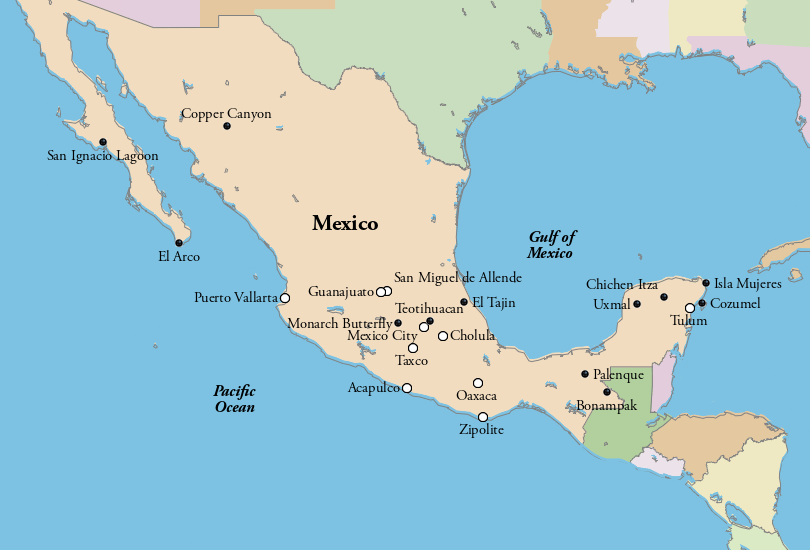



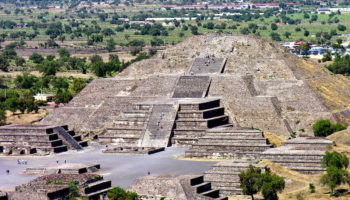

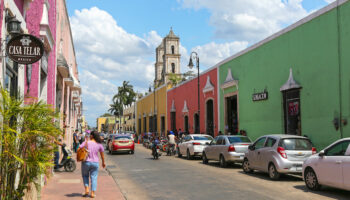

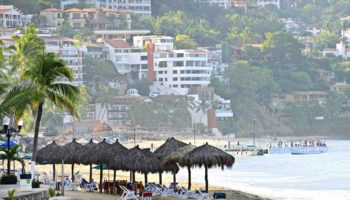


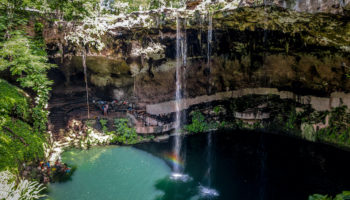

Acapulco with all its problems is still absolutely gorgeous and always has been. It’s ashamed they don’t protect it more.
Monarch butterfly is pretty good place to visit mostly during February and March
We just went this summer to Teotihuacan, it was awesome!!! We have been to Mexico 5 times in the last 15 years but this is the first time we have gone anywhere besides visiting my husband’s family. We need to see some of these other places also someday!!!
Don’t forget Uxmal ruins, much more beautiful than Chichen Itza in my opinion.
What about Guadalajara?!
This is a great list of attractions in Mexico. Those who are visiting should consider trying to visit at least a couple of these during their vacation.
Attractive Pictures, makes one feel like Catching a Plane immediately to few destinations
as above. Good Luck to the people from Touropia who made the research. Thanks and
best regards. Raj
Excellent research! This is a wonderful resource for travellers to the region.
Nice job on the tourist attractions! They are beautiful and acurrately correct. This also helped me very much on my project about Mexico. So thank you so so so much!!!!!!!!!! The only flaw is the paragraph about Palenque because where it says Palenque is much smaller than it Mayan neighbor cities, “it” is supposed it’s.
Guanajuato is really an amazing little city, happy to see it made the list!
Chichen Itza is a beautiful place ! I was there viewing the temple pyramid . It is amazing ! You should visit , xoxo Day Day
Acapulco and Tulum have beautiful beaches. I was there watching the cliff divers jump into the see. Awesome. But cozumel will make you fall in love with the underwater.